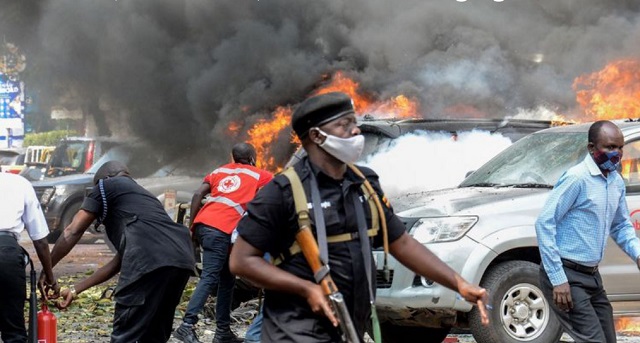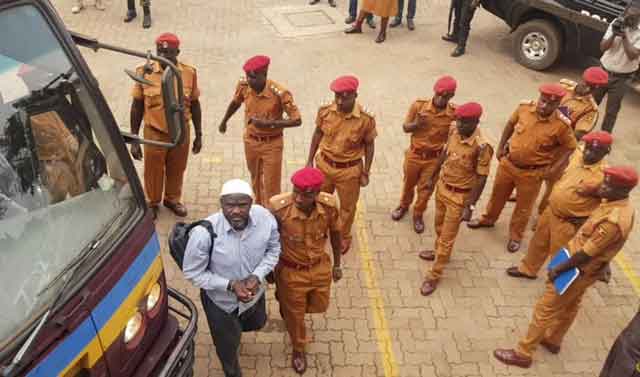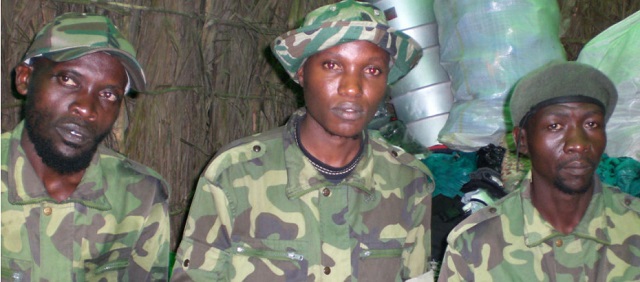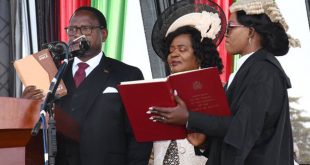
ADF, Islamic State, al-Shabaab working together
COVER STORY | THE INDEPENDENT | The recent terror attacks in Kampala point to a change in tactics by the DR Congo-based Allied Democratic Forces (ADF) and deeper Jihadi coordination with the Islamic State and al-Shabaab of Somalia. They apparently share training and technology and coordinate attacks in the region.
The revelation comes after the global terrorist organisation, Islamic State, on Oct. 07 took responsibility for its first attack in Uganda after detonating explosives inside a police station in Kampala.
But approximately one week earlier, on Oct.01, the Rwandan police had arrested 13 persons linked to ADF alleged to have been plotting a terrorist attack in Kigali.
The plans were assumedly in response to the Rwandan military campaign against the Islamic State in Mozambique. They had explosives and other material to produce bombs.
According to the experts, the ADF use what they call the “Chain Restaurants Model”. They are all trained by the same source and use similar technology but each terrorist cell operates independently.
“If one goes down, it doesn’t affect the others,” the experts say.
The ADF reportedly has logistical links with a group in the United Kingdom and more recently a South African-based criminal network, both of which have provided vital funding. They add that while most of the ADF’s members are from Uganda and DRC, some are from surrounding countries.
The Islamic State’s role appears to be to transfer ideas, tactics, training and personnel. According to the experts, this is how the shift to improvised explosive devices (IEDs) in eastern DRC, Mozambique, and Uganda has come up.
A 2020 UN report on DR Congo described how, from 2019, the ADF started increasingly to use IEDs and that improvement in the technical construction of the explosive ordnances had taken place.
“While impossible to confirm at this stage, this evolution could be the result of technical assistance from other IS affiliates,” the UN report said.
The likelihood of such collaboration in terms of the IED production is further strengthened by the finding on June 72019 of an IED in Beni with a paper attached with the text “Made in Dawlah”, potentially a reference to IS (usually referred to as “Dawlah” by its supporters) and a tactic that has been used by supporters in other regions.
The UN says such an interpretation is supported by a recent UN report stating that there has potentially been coordination and transfer of know-how, resulting in an increasing coherence in modus operandi.
On Sept. 21, the DR Congo army had arrested a Jordanian working with ADF. According to news reports, the Jordanian was in charge of the ADF’s drone program.
Those incidents, according to a report by the International Centre for the Study of Radicalisation of the Department of War studies at King’s College London, appear to be clear signs of collaborated movement by terrorists in the region.
Attacks by ADF in Kampala have until now been done mainly by assassinations done by men riding on motor-bikes hitting high-profile targets. But their tactics appear to be changing.
On June 01 alleged ADF assassins attacked a vehicle carrying Uganda’s Transport Minister and former army commander, Gen Katumba Wamala, killing his daughter and driver.
But on Oct. 07, 2021, Islamic State announced that its fighters had detonated an IED at a police post in Kawempe, a suburb of Kampala City. But the police denied such an attack happened. In any case, there appears to have been no damage or casualties at the police post.
But the eruption of a new wave of terror attacks was cemented when an explosion hit an eatery in Komamboga in the same outskirt of Kampala city on Oct.23 killing a 20-year-old waitress and injuring three others. And Islamic State quickly claimed responsibility that too. Still Police dismissed the IS-link.

Police’s spin-master, spokesman Fred Enanga said the bombings were the work of domestic terrorist cells of the ADF.
Two days later, however, a suicide bomber detonated an explosive on a long-distance bus 30km west of the capital, killing himself and Islamic State claimed that too.
And when on Nov.16, suicide bombers exploded two devices almost simultaneously; one near the main police station in Kampala city and the other near parliament, killing at least seven people and injuring more than 37, even the police spin-masters appeared to run out of words.
“We believe there are still more members of these domestic terror cells, especially the suicide bomb squad that has been created by the ADF,” Enanga told journalists.
The emergency of new tactics of suicide bombings as opposed to ADF’s familiar assassinations is significant.
Unlike assassinations which aim to paralyse the political leadership of a country and cause all of them to live in fear, guarded by equally scared convoys of security operatives, bombings spread terror among the general population, sowing chaos and division in society and hemorrhaging the economy even more through increased security and military expenditure to fight and defend against attacks.
Assassinations sow chaos through the killing of leaders, but suicide bombings sow chaos through the ripple effect of the attack. Everyone in the country starts wondering where the next attack will be. Security check points intensify, multitudes of suspects are rounded up and locked up without trial, many suspects are killed without due process, anger against the government grows, and eventually – if the terrorists are not defeated – the system collapses under its own weight. That is possibly what the ADF, Islamic State, al-Shabaan, who are working together against President Yoweri Museveni’s government, could be hoping for.

Somalia named
UN reports on Islamic State have also emphasised several times the organisational link between the terrorist groups, according to research by the Institute for Strategic Studies (ISS) published in an article titled “Uganda terror attacks point to deeper Jihadi coordination”.
Relying on intelligence information from member states, the reports describe Islamic State Central Africa Province (ISCAP) as Islamic state’s regional province covering Somalia, DR Congo and Mozambique.
According to a report dated February 03, 2021, Somalia has been designated as the command centre for ISCAP, meaning that it is acting as the link between the affiliates in East and Central Africa and IS’s central organisation in the Levant, as organised in its Administration for Distant Provinces (idarat al-wilayat al-ba’ida).
This logistical and supervisory function has meant that trainers and operatives have been sent from Somalia to both DR Congo and Mozambique. Allegedly, these trainers, as well as media officials, are based in Puntland but have on several occasions travelled to eastern DR Congo to an ISCAP command centre located in Beni to train DR Congo fighters and officials.
The recent Kampala bombings recalled two similar assaults on the capital in July 2010. Bars crowded with customers watching the World Cup were bombed, killing 76 people. Operatives of al-Shabaab – the violent extremist group in Somalia – were convicted for those attacks. Their motive was revenge against Uganda for contributing troops to the African Union’s peacekeeping mission fighting al-Shabaab in Somalia.
The emerging collaboration between ADF and al-Shabaab could mark a turning point because, until now they have been perceived to be on opposite sides of the great jihadi divide between al-Qaeda and Islamic State. The al-Shabaab is an al-Qaeda affiliate, while ADF was with Islamic State. The experts say, in this case, it is possible ADF and al-Shabaab could be working together against what they call the “crusader Uganda government”’.
“Al-Shabaab has since functioned as a key partner in logistics and training for the ADF, even after its incorporation into (Islamic State). Early on, the ADF started sending fighters to Somalia for training, with al-Shabaab also sending trainers to DRC and the two groups engaged in shady smuggling exchanges related to illegal mining in North Kivu,” says their report.
The Islamic State appears to treat the denial of its presence in the region as comical.
In early August 2021, after similar denials following attacks in DR Congo, it wrote: “The governmental and international media in Congo continue to describe the soldiers of the Caliphate with strange local names (!), far away from the name and purpose of Islamic State. This is done to avoid admitting that what they are fighting in the Congo today is the same Islamic State that they previously claimed was eliminated in al-Baghouz!”
The al-Shabaab has similar collaborations in Mozambique, Kenya, the DR Congo, Rwanda, Burundi, South Africa. Jamil Mukulu, until recently the leader of ADF, stayed in Sudan in the 1990s where he is rumoured to have befriended Osama bin Laden. The ADF sent fighters to Sudan to train with bin Laden’s al-Qaeda operatives with assistance from the Sudanese government.
The insurgency in Mozambique’s Mocímboa da Praia region in 2017 happened just two months after Tanzanian fighter Daktari Khalid wrote in July 2017 to his “dear brothers in Kenya, Uganda, Tanzania, Malawi, Mozambique, Angola and in other parts of the worlds” to come and take part in this “Ibaada so that we can establish the rule of Allah on earth.”
Brutal Baluku strikes
In a report titled `The Arc of Jihad: The Ecosystem of Militancy in East, Central and Southern Africa’, the expert analysts say the changes in tactics and increased collaboration are driven by the radical ideology of the current leader of ADF, Musa Muhsin Baluku aka PC, who has more fundamentalist beliefs than the jailed former leader and founder Mukulu.
Musa Baluku, who became leader of ADF in 2015 after Jamil Mukulu’s arrest in Tanzania, is often seen in his only known photo as a young man in his twenties, with an innocent look and sweet half smile. But in reality, Baluku is a 44-year old hardened commander of the rebel militia group who is notoriously violent, has presided over beheadings, crucifixions, and death by firing squad of armed opponents, civilians, and ADF members who oppose him. He has been the ADF’s chief judge, enforcer of Sharia law, and political commissar; hence the alias `PC’ whose main message is that it is a virtue to die for jihad.
The expert report quotes Baluku saying in September 2020: “There is no ADF anymore … ADF was merely an alliance out of necessity for a certain time and when we finally got empowered … we are no longer ADF as a group! Currently, we are a province, the Central Africa Province (ISCAP) which is one province among the numerous provinces that make up the Islamic State.”
Four years after Baluku became leader of ADF, Islamic State in April 2019 claimed its first attack in an ADF area in DR Congo in a move that made public that the caliphate had an official affiliate in Central Africa. Since then, IS had by early 2021 claimed responsibility for 185 attacks in this region, 130 of them in the eastern regions of North Kivu and Ituri.
Many observers still regard ADF as a gang of warlords plundering DRC communities and flying the sinister Islamic State flag as a justification. Now, however, many analysts are starting to believe the ADF really is a dedicated jihadist group which supports Islamic State’s global ambitions.
Despite existing for several decades, the ADF remains a rather obscure organisation. The ADF was formed in 1989 to fight the then-new government of President Yoweri Museveni but were forced to flee to the DR Congo. Once in DRC, the ADF allied with the National Army for the Liberation of Uganda (NALU) under the leadership of Abdallah Yusuf Kabanda. Mukulu acted as his deputy until 2005, when he took over.
Baluku who is from the Bakonjo tribe joined ADF in the late 1990s. But he rose quickly through the ranks to become Jamil Mukulu’s assistant. To grab the leadership of ADF, Baluku had to push aside the commander Richard Mugisha, who Mukulu had anointed. Mugisha, who joined ADF from the UK where he was educated and is also a historical commander of ADF is the stepson of Mukulu.
Early in 2019, the ADF split into two factions when Mukulu pushed for closer collaboration with Islamic State as Uganda’s then-Internal Security Organisation (ISO) boss Kaka Bagyenda had warned in May 2018. Kaka’s warning came after it emerged that Kenya-based IS-linked financier, Waleed Ahmed Zein, had sent $150,000 to the ADF in the first uncovered IS-related funding scheme for ADF.
A smaller faction headed by veteran ADF-official Benjamin Kisokeranio disagreed openly with Baluku. They reportedly wanted ADF to remain loyal to Jamil Mukulu’s vision of an Islamist insurgency focused on Uganda. But when Kisokeranio and members of Jamil Mukulu’s family moved to another area and started recruiting, Baluku executed a daughter of Jamil Mukulu who was one of his wives.
During Mukulu’s reign, the ADF had an Islamic identity and close links with local mosques in eastern Congo and Uganda but at the time its stated objective was to establish an Islamic government in Uganda.
Mukulu received some of his education in Saudi Arabia, and was very exposed having travelled to Afghanistan and Pakistan in the 1970s to receive military training and with contacts in Europe, the Middle East, Sudan, South Africa, and mainly Kenya and Tanzanian. Baluku is almost the opposite as he lacks exposure and education. But he appears to fill these gaps with conviction, belief, and brutality.
Over the last few decades, the ADF has killed thousands of mostly unarmed civilians in the DRC North Kivu province.
But Baluku’s ascent to the leadership reportedly marked a shift to much more brutal tactics and increasing killing of civilians in the eastern DR Congo area of North Kivu where ADF mainly operates.
The killing of civilians accelerated rapidly, at least in part because they were perceived as non-believers, the authors suggest.
****
 The Independent Uganda: You get the Truth we Pay the Price
The Independent Uganda: You get the Truth we Pay the Price




Bullshit Bullshit BIG BULLSHIT